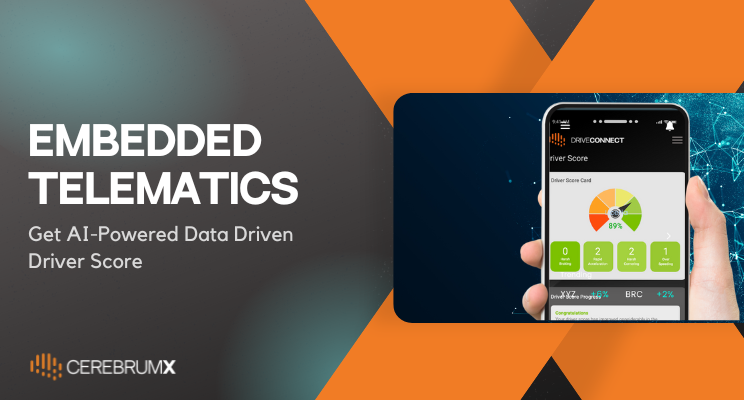In an era where road safety is paramount, the role of technology in enhancing fleet safety cannot be overstated. Telematics, a technology that integrates telecommunications and informatics, has revolutionized fleet management by providing real-time data about vehicle performance and driver behavior. One of the pivotal aspects of telematics is driver scoring, which assesses driver performance and encourages safer driving practices.
This article delves into the significant impact of embedded telematics and driver scoring on fleet safety, exploring how these technologies work, the benefits they offer, and their potential to reshape the future of transportation.
The Foundation of Telematics and Driver Scoring
Embedded telematics encompasses the use of GPS systems, sensors, and onboard diagnostics to collect and transmit data related to vehicle location, speed, acceleration, braking, and more. This wealth of information enables fleet managers to monitor vehicles in real-time and make informed decisions to optimize routes and maintain vehicles.
Understanding Driver Scoring
Driver scoring is an integral component of telematics that evaluates driver behavior based on a set of predefined parameters. These parameters can include harsh braking, aggressive acceleration, speeding, cornering, and adherence to traffic rules. By assigning a numerical score to each driver, fleet managers gain insights into individual driving patterns and areas for improvement. This score can also be used to incentivize safe driving practices through reward programs.
The Impact on Fleet Safety
Implementing telematics and driver scoring has shown a remarkable impact on fleet safety. By identifying and rectifying risky driving behaviors, these technologies significantly reduce the likelihood of accidents. Drivers become more accountable for their actions on the road, knowing that their driving habits are being closely monitored. Moreover, telematics can alert fleet managers in real-time about potential safety concerns, allowing them to take immediate action and prevent accidents.
Behavior Modification and Training
Driver scoring goes beyond merely evaluating drivers; it serves as a tool for behavior modification. When drivers are aware of their scores and how they are being assessed, they are more likely to adopt cautious driving habits. Fleet managers can use the data collected to design targeted training programs that address specific areas of concern. This proactive approach not only improves safety but also contributes to the professional development of drivers.
Data-Driven Decision Making
Telematics provides fleet managers with a treasure trove of data that can be analyzed to make informed decisions. By identifying trends and patterns in driver behavior, managers can implement preventive measures that address common issues. For instance, if a particular route consistently shows higher instances of harsh braking, the route design can be reevaluated. This data-driven approach optimizes operations and enhances overall safety.
Insurance Benefits
The positive impact of telematics and driver scoring extends to insurance partnerships. Many insurance companies offer discounted premiums to fleets that implement these technologies. The rationale behind this is simple: safer driving practices translate to fewer accidents and reduced insurance claims. The data generated by telematics serves as tangible proof of a fleet’s commitment to safety, leading to potential cost savings for the company.
Challenges and Considerations
While the benefits are evident, the implementation of telematics and driver scoring is not without challenges. Privacy concerns are paramount, as the collection of driver data raises questions about its usage and storage. Striking a balance between safety and privacy is crucial. Additionally, the initial investment in telematics systems and the training required to interpret data can be daunting for some fleet operators.
The Future Landscape
The future of fleet safety lies in the continued advancement of telematics and driver scoring technologies. As artificial intelligence and machine learning algorithms improve, the accuracy of driver scoring will increase, allowing for more nuanced evaluations. Predictive analytics could become a staple, enabling fleets to anticipate potential safety risks and take preventive measures.
Conclusion
Telematics and driver scoring represent a pivotal juncture in the evolution of fleet safety. By harnessing the power of real-time data and behavior assessment, these technologies elevate driver accountability and reshape the way fleets approach safety.
The positive impact on accident reduction, behavior modification, and insurance benefits underscores their significance. However, as with any technological advancement, a thoughtful approach to implementation that respects privacy concerns and addresses challenges is essential.
As we journey into an era of smarter transportation, telematics and driver scoring stand as beacons of safer roads and responsible driving.

